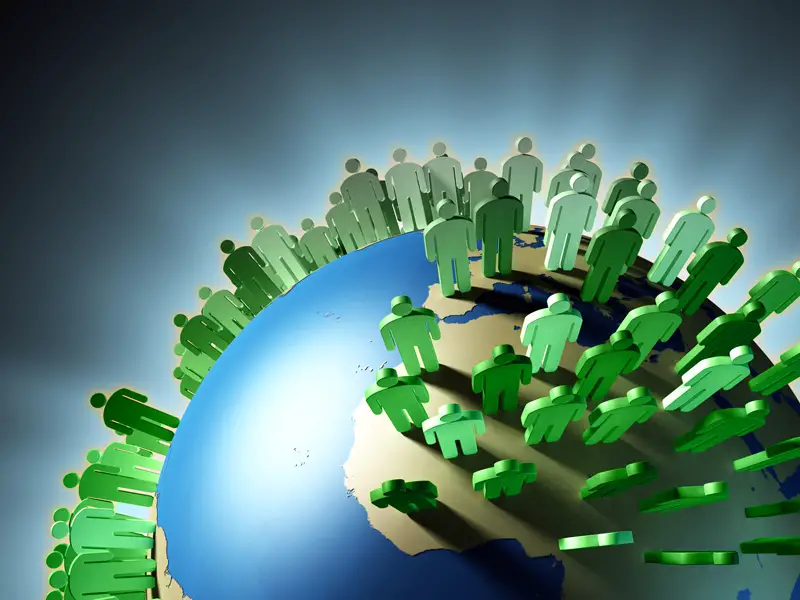
7th September 2016 Global population to reach 10 billion by 2053 The world's population will surpass 10 billion by 2053, according to the latest forecast from the Population Reference Bureau.
The number of humans on the planet – which currently stands at 7.4 billion – will increase by over one-third to reach 9.9 billion by 2050, according to the latest forecast from the Population Reference Bureau (PRB), a U.S. non-profit organisation based in Washington, DC. If the assumptions underlying this projection are applied to subsequent years, the figure will reach 10 billion by 2053. Jeffrey Jordan, president and CEO of the PRB, comments on these findings: "Despite declines in fertility rates around the world, we expect population gains to remain strong enough to take us toward a global population of 10 billion. Significant regional differences remain, though. For example, very low birth rates in Europe will mean population declines there, while Africa's population is expected to double." The PRB's estimate is slightly higher than the United Nation's World Population Prospects: 2015 Revision, which envisions a world of 9.7 billion people by the middle of the century and 9.8 billion by 2053. It is even greater still than the U.S. Census Bureau's estimate of 9.3 billion by 2050. The data in this report shows that Africa's population will grow from 1.2 billion in 2016, to 1.6 billion in 2030, and 2.5 billion by 2050. The total population of the Americas will see only a small change, rising from 998 million in 2016 to 1.2 billion in 2050. Asia will gain 890 million to reach 5.3 billion by 2050, while Europe registers a decline from 740 million to 728 million. Oceania (which includes Australia and New Zealand) will rise from 40 million to 66 million. The PRB's widely referenced Data Sheet has been published annually since 1962. This year's edition presents the latest data on 19 key population, health and environment indicators for the world, major regions, and over 200 countries. They have also added six indicators and analytical graphics that explore the balance between providing for human needs and sustainably managing the natural resources on which people depend.
Other findings in the report include: • The combined population of the least developed countries will double to 1.9 billion by 2050. There are 48 of these countries, based on U.N. criteria – most of them in Africa. • Niger, the country with the highest birth rate, will see its population more than triple – from 19.7 million in 2016, to 68.9 million in 2050. • India will be the most populous country in the world by 2050, with 1.7 billion people. China will have fallen to second place with 1.3 billion. • The United States will remain in third place. Its population will increase by 23 percent – from 324 million today to 398.3 million in 2050. • Nigeria will leap from seventh into fourth place. Its population will more than double to 397.5 million by 2050, just 800,000 below the United States. • A total of 42 countries will see their populations fall. These are scattered throughout Asia, Latin America, and Europe. Some European nations will experience major declines, such as Romania, which is projected to go from 20 million today, to only 14 million in 2050. For more information, visit worldpopdata.org
---
Comments »
|









